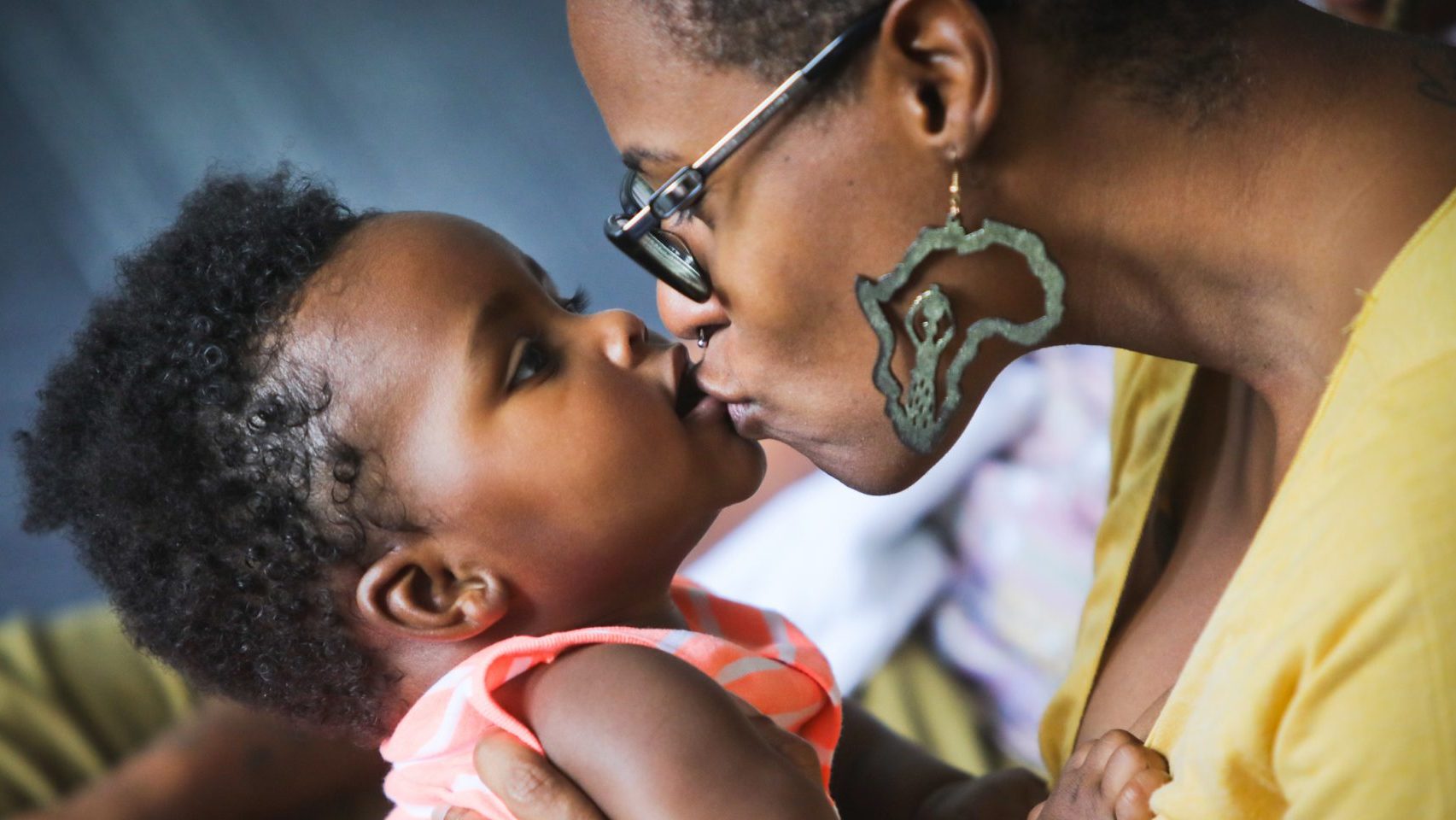Baby sleep regression starts at 3 months (but it is often a little later). The baby is supposed to do his nights. In principle, he no longer needs to eat at night and should sleep through the night and in the morning! But sometimes it happens differently.
You spend more than 20 minutes, baby, and he wakes one or more times a night, and you don’t understand why? Before talking about natural sleep disorders, there may be 2 or 3 things to consider.
What is Baby Sleep Regression?
Newborns sleep about 16–18 hours a day, which may surprise you if you’ve been tired and stumbling around since Junior came into your life.
Because newborns aren’t born with mature circadian rhythms, the circadian rhythm is the built-in body clock that regulates how wide awake and sleepy we are.
We feel at various points in the day, which requires resetting each day so our internal schedules will mesh with the 24-hour schedule that the world operates on. A newborn’s sleep patterns are very different from those of an adult.
Your newborn is a lighter sleeper than you
Your newborn is a lighter sleeper than you are, has shorter sleep cycles, and experiences more transitions between sleep stages. Here are some other vital things you need to know about baby sleep regression.
Newborns sleep in “chunks” of time fairly evenly distributed around the clock. Unlike adults, who tend to do most or all of their sleeping at night, a newborn’s sleep is broken into six or seven rest periods evenly distributed around the clock.
Newborns spend more time sleeping at night than during the day. If you analyze newborn sleep patterns in great detail,
You will discover that a typical newborn spends a fraction more time sleeping at night than during the day, but barely! Scientists don’t know why this happens.
But they theorize that maternal hormones released during pregnancy or the mother’s sleep-wake during pregnancy may help to “program a baby to be awake during the day.”
This regression comes about 4 months before or after sometimes. The baby sleeps well around 8 weeks or before, even under dependency (the parent fell asleep in the evening, went to bed, and went alone after the drink).
Your infant now needs to sleep, and nightmares move to the parent in order to get her baby to sleep. The parents are also convinced that this has nothing to do with growth since the baby is not asking for food.
Often, the action is to put it up or flatter it for a few seconds, and then it is off to the land of dreams.
Why Does Baby Sleep Regression Happen?
Why is this happening? It’s just because babies are getting more and more awake to their surroundings, especially to their people.
They discover a little more every day about the tenderness of their parents and all the attention they receive. They ask even more instead of listening to their body’s fatigue and the signals their brain sends them that it is time to “pick up” and go to sleep.
If sleep learning has yet to start, it’s time to consider it seriously because it’s rarely done by itself.
Babies need more sleep than adults because they are growing at such a rapid rate. A typical baby will double his weight by six months and triple it by his first birthday.
And those numbers don’t even account for the learning development during that period.
Initially, your baby’s sleep cycle is firmly rooted in his feeding schedule.
Newborns sleep most of the time, wake up when they’re hungry, eat, and then fall back asleep after eating and having a chance to hang out with you for a while.
What Is a Sleep Problem?

During the first year of life, a baby wakes up frequently during the night. As you have now learned, this is not a problem.
It is a biological fact. The problem lies in our perceptions of how a baby should sleep and in our own needs for an uninterrupted night’s sleep.
We parents want and need our long stretches of sleep to function at our best in our busy lives. The idea then is to slowly, respectfully, and carefully change our baby’s behavior to match our needs more closely.
How Much Sleep Do Babies Need?
All babies are different, and some genuinely do need less (or more) sleep than shown here, but the vast majority of babies have similar sleep needs.
If your baby is not getting close to the amount of sleep on this chart, he may be chronically overtired, affecting the quality and length of his naps and nighttime sleep.
Your baby may not seem tired because overtired babies (and children) don’t always act tired, at least not in the ways we expect.
Instead, they may be clingy, hyperactive, whiny, or fussy. They may also resist sleep, not understanding that rest is what they need.
8 Things That Can Disturb Your Baby’s Sleep from 0 to 9 Months
- Discomfort, disease, and pain
- Dental outbreaks
- Separation anxiety occurs when a child realizes that his mother exists outside of him.
- The turbulent nights of significant acquisition periods: walking, language, cleanliness.
- Changing the pace of a trip
- The entry into daycare
- Sleep is disturbed by nightmares.
1-A sleep deficit
It’s often the starting point for all problems and the most recurrent in consultation.
The signs of this debt are waking up early (before 6 a.m.), seeing one or more stars at night, crying a lot to fall asleep, or a siesta that isn’t as good or as long as it used to be.
It is a vicious circle. The baby lacks sleep, and the less he sleeps well,
How to fix it? Try to lengthen the time spent in bed by sleeping earlier, including keeping a steady rhythm for meals and snacks.
Allowing your child to take a nap at the beginning of the afternoon (because it’s the most important) and putting in place an excellent 3-step ritual (hygiene, relaxation, and affection) puts your child under the best conditions to fall asleep.
2-Baby Sleep Regression Period
During significant psychomotor development, sleep may be disrupted. For example, around 4 months, the sleep structure changes: micro awakes during cycle changes become real periods of awakening, requiring the child to be autonomous to surrender.
At about 8–9 months, it’s time for fear of separation, and it may have trouble leaving you to go to bed. The acquisition of walking or language skills can also disturb your child’s sleep.
How to fix it? If you think your baby is getting into one of these situations, you can only comfort him (mostly by giving him a good routine to help with separation) and deal with his pain.
Sleep regressions usually last a few days and come back in order without any intervention from you.
Be careful not to create inappropriate associations that would make your child dependent on someone or something so you can fall asleep and get back.
3-Small diseases
Children with rhinitis, otitis, and other childhood diseases rarely sleep well at night. If the baby has a fever or is breathing badly, he’ll wake up at night.
How to fix it? Mold well with physiological serum before bedtime and maybe give paracetamol after talking to your child’s doctor.
Baby tooth pain
For some children, dental pushes are very painful. And at night, often, the pain may be accentuated by the fact that it is elongated. Nights cut short by a baby crying are difficult for parents and babies alike.
How to fix it? You can put a cushion under his mattress to raise his head and alleviate pain; use homeopathy; or give him a big hug to comfort him.
5-Infant Digestive Problems
In the early months of a baby, the colic of the infant can hinder him. Later, what you put on his plate at dinner can influence his sleep quality.
How to fix it? A small massage before bed can relieve colic. Later, be careful after a meal because this will make digestion take longer and be harder. Stay away from proteins, fats, and sweets.
6-Bad Sleep Conditions
We discuss unacceptable conditions when they make the child dependent on someone or something to fall asleep. When the baby gets asleep only inside, in his arms, in his pussy, he will find it hard to surrender himself in case of awakening during the night.
7-Bad Sleep Routine
Sometimes your child is not in an atmosphere conducive to sound sleep. A little cartoon before going to bed? bad idea.
How to fix it? The time before bed must be calm. This is a parenthesis before the bedside routine, which must be done in 3 steps so that the separation is smooth:
- Hygiene (change of clothes, facial cleaning…)
- relaxation (massage, reading, history…).
- affection (hug, kiss, sweet words).
This routine must be done only in the child’s sleep environment, in a sieved atmosphere, the same way every night, and in the same order, so that the baby can tell when it’s time to go to bed. It must not last longer than 15 minutes.
8-Bad Sleep Conditions
If Baby needs slots, there is also a need for flexibility. If you feel that it is in full shape, sleep may cause problems… On the other hand, be careful not to wait too long. You have to know how to detect the right time!
How to fix it? Attention must be given to the slightest sign of fatigue. He’s rubbing his eyes, his nose, and ears; he’s irritable; he cries; his arcade arcades are blushing, and his movements are sprinkling. In these cases, we have to sleep the child for the next 15 minutes so we don’t miss the train. Sleep!
The Most Effective Ways to Aid Your Baby’s Sleep Regression
Baby Sleep Training:
If nothing works, we do the best we can in the circumstances. Point Some babies will ask you questions because nothing will work. It’s all right. One day it’ll be better. The most important at 0–4 months? It makes no difference how or where that baby sleeps.
- Rethinking the sleep routine 0–4 months
In the first few months, we should not think in terms of routine and hours of nuns but rather of hours of awakening.
In the first few days, the baby sleeps a lot, drinks a lot, and has 1-2 periods of awakening. Then, over time, the amount of time woken up increases. When should he sleep? After 30-40 minutes, then 1 h of awakening at the beginning, then quietly 1:30 One of the mistakes we’re going to make is not to watch out for signs of fatigue and prolong the alarm too much.
Watching our baby helps us determine the perfect period of awakening. And at the right time, it helps to avoid a baby from being too tired from sleeping.
- To put your baby to sleep in various ways.
You can create a mini routine schedule to avoid baby sleep regression by using x or y at x given time. The principle of the routine is that, in the long run, the baby will be able to expect what happens, which is reassuring.
What are the best ways to put your baby to sleep?
-the pusher (flat or transferred out of the shell after 30 minutes by security)
-the baby carrier (some are going to need our hands on their body or a sock near their face too)
-walking (side position against us, head on our arm or stuck to us like breastfeeding, but a little higher, or vertical position with dodo to imitate the baby door).
-the first days: in the bottom of our legs
-by taking it away, then either depositing it like that with or without white noise or walking/wandering
-skin, or contact with our hands, neck, and others, can help.
-by breastfeeding. Breastfeed as often as necessary without watching the time. Breastfeeding is both feeding and reinforcing.
Is the baby constantly drinking for hours?
Probably normal. In the event of doubt about the amount of milk absorbed, see a lactation consultant.
The plug is really effective but takes practice. Many will stop thinking that the baby doesn’t like it, but since the baby just spent 9 months confined in a small space, it’s worth trying several times and practicing well.
For a baby with agitated sleep, sometimes what can help is the walk (more “intense”), and once asleep, one can be lulled (at first quickly, then quietly and quietly, until it is stationary and then table it). If it is a baby carrier, you can use a balloon to sit down.
We follow the light rule for movement and noise volume: agitated = faster movement (while remaining safe and loving) and its volume is high (as a benchmark: the sound of a sweetheart).
Above all, some babies are already able to surrender themselves. Change the layers, pick up and drop the baby next to yourself (in bed, stuck to the bed, or yours) on a regular basis. Close your eyes; if he needs more, you will know.
1 Accept hours of awakening at night.

In the first few weeks and then towards the 4-month regression, the baby can be agitated and need to be constantly pulled or refuse to sleep at night.
I am one of those people who thinks that fighting what is normal is useless. Enjoy a cup of tea and read a book during these periods. If the baby is awake, gently whisper with him, collect his smiles, and try to sleep after 30 minutes.
- Mom’s Sleep
In the first weeks, I tried to do 2 nuns and then 1 a day. Especially with nightmares, it helps a lot. I sleep with the baby, breastfeeding when needed.
To facilitate sleep, you can grab it and let go of the white noise during the baby’s dodo periods. When he wakes up at night, most of the time it is enough to make him go.
By having a baby very close to me, I wake up before he cries. If he coughs, for example, it lets me know whether or not I have to wake up.
Asking for help to sleep is also very beneficial. Your dad, or another person who’s going to come, will be able to help you.
Going to bed at the right time can help. Many babies have a period where they sleep longer than usual after the racquets. It’s time to go to bed as soon as the baby seems to be gone for a few hours.
- As long as the baby needs it, comfort and lull.
A need must be filled, simply. Struggling to try to change a baby through a technique may create more frustration than other things.
The first 4 months, above all, must focus on learning about our baby and the ways he uses to comfort him.
Conclusion
To avoid baby sleep regression: While all infants have the same rate of sleep learning overall, sometimes there are significant sleep differences between them. If some can sleep 16 hours a night, others will sleep only 12… It’s not a question of bad sleep, just temperament.
For example, children with lower weights, anxious children, and children growing faster sleep fewer hours. On the other hand, larger, more relaxed children would sleep much longer.
Regardless of the age of your infant, avoid any errors, such as hugging of the baby once it has slept, taking it in your arms to make it back, or even ignoring the first signs of your baby’s fatigue. Because he needs to go to bed at the same time every night, don’t keep him from going to sleep when it’s time.
In addition, your baby’s sleep comfort goes through its support. Learn about what your baby prefers. If you travel often, encourage the hammock that you can install on any baby bed and will give it something that it is used to in an environment that it is not used to.
- Every baby learns to make his nights at his own pace, and even when he sleeps well, there can be backups.
- Around 5 to 6 months, a baby is ready for a sleep routine.
- A baby needs to feel safe to get to sleep. During the time of separation, they may also need to be reassured before bedtime.





3 thoughts on “Baby Sleep Regression – 10 Surviving Guide For New Parents”
Comments are closed.